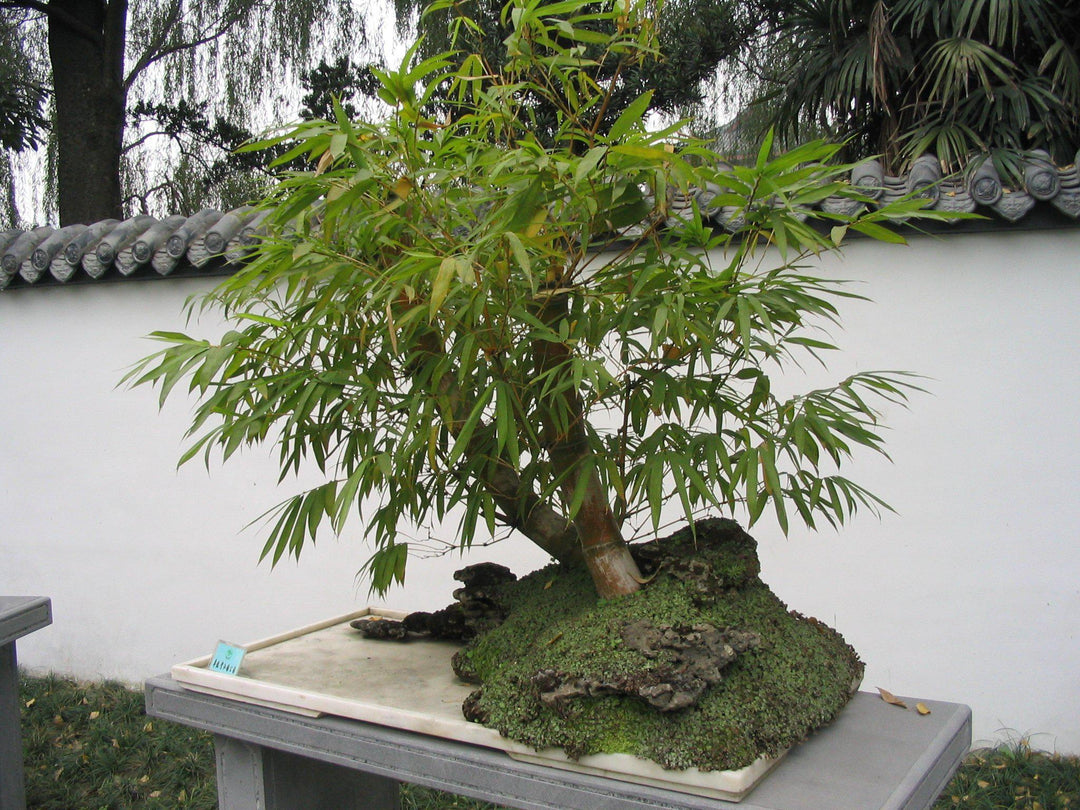
How To Take Care Of Your Heavenly Bamboo Bonsai Tree
Nandina Domestica Bonsai Care
About The Heavenly Bamboo Bonsai Tree
The heavenly bamboo, commonly known as Nandina, or sacred bamboo, is a suckering shrub in the Barberry family.
It's native to eastern Asia, from the Himalayas to Japan.
This evergreen is seriously hardy, with a lacy foliage that turns bronze and red in the winter.
In spring, the young leaves turn a bright pink to red before turning green.
Old leaves turn red or purple again before falling.
The Heavenly bamboo has numerous stems growing from the roots - as you would expect from a bamboo.
The glossy leaves are evergreen, although sometimes they'll drop in colder areas.
The flowers are white, forming in the early summer, and turning into bright green berries in mid summer, finally ripening to a bright red in the late summer or early autumn.
Placement
The heavenly bamboo is a tropical plant and will die if frozen. When the overnight low temperatures drop to 50 degrees, it's time to bring your bonsai indoors for the winter.
When the low temperatures are consistently above 55 degrees, feel free to bring you r bonsai back outside.
It loves light, and should get plenty of it on a south facing windowsill if possible.
Watering
The heavenly bamboo, like most bonsai trees, will die if it dries out. It enjoys plenty of water in well draining soil. Never let it dry out completely.
Humidity
The heavenly bamboo enjoys humidity in the drier months, and a suitable humidity drip tray will provide plenty.
Fertilizing
Since your heavenly bamboo bonsai is in a small pot, and not the ground, it needs nutrients. A slow release (pellet based) fertilizer is perfect for this, and can be added sparingly every 1-2 months during the growing season.
Pruning & Trimming
Trim back the new growth to the farthest safe point that looks good to you — but never remove all of the new growth.
A regular trim will help keep your heavenly bamboo bonsai tree short, while helping the trunk grow thicker.
Repotting
Repotting must be performed periodically on your bonsai, heavenly bamboo included, when its root system has filled the pot. If you can clearly see the roots coming out of the bottom of the pot, it’s time to repot your bonsai.
Generally, this means every 2-3 years for a deciduous tree and every 4-5 years for an evergreen. heavenly bamboo, being an evergreen, will need to be repotted around every 4-5 years depending on its environment.
Repotting should be done in mid-summer, when the tree is at it’s least fragile state.
Your heavenly bamboo bonsai, along with all of its soil, should be removed from the pot. From there, you can trim away no more than 1/3rd of the root mass (1/4th is preferred.)
Then you can repot the tree in the same pot, or give it a newer / bigger pot to thrive in.
After repotting, your bonsai heavenly bamboo should be thoroughly watered.
Diseases, Insects & Other Pests
Your heavenly bamboo bonsai can be treated for pests like a normal heavenly bamboo plant. Just remember, your tree is miniature and will need a much smaller and more gentile dose of treatment.
Would you like to SEE these instructions as a series of videos, instead of just reading them?
If you want to demystify the art of bonsai so you can become a master of this relaxing hobby in just a few days, you need the right training. I’ve built a digital video course that mixes classroom style instructional videos with “over the shoulder” style training videos to make bonsai simple to understand, and easy to start.
In this digital video course, you'll discover:
- How to create a bonsai tree from scratch that will help you experience true inner-peace and calm.
- How to keep your tree collection alive and well so you can enjoy their benefits for a lifetime.
- How to shape your bonsai like a professional, allowing you to design it however you like.
- What bonsai tools you really need and how to use them so you’ll never buy a tool that you don’t need again.
- How to cultivate your own trees so you never have to buy another tree from a store again.
- How to use all of this to create your own bonsai collection so you enjoy this relaxing hobby for the rest of your life.


